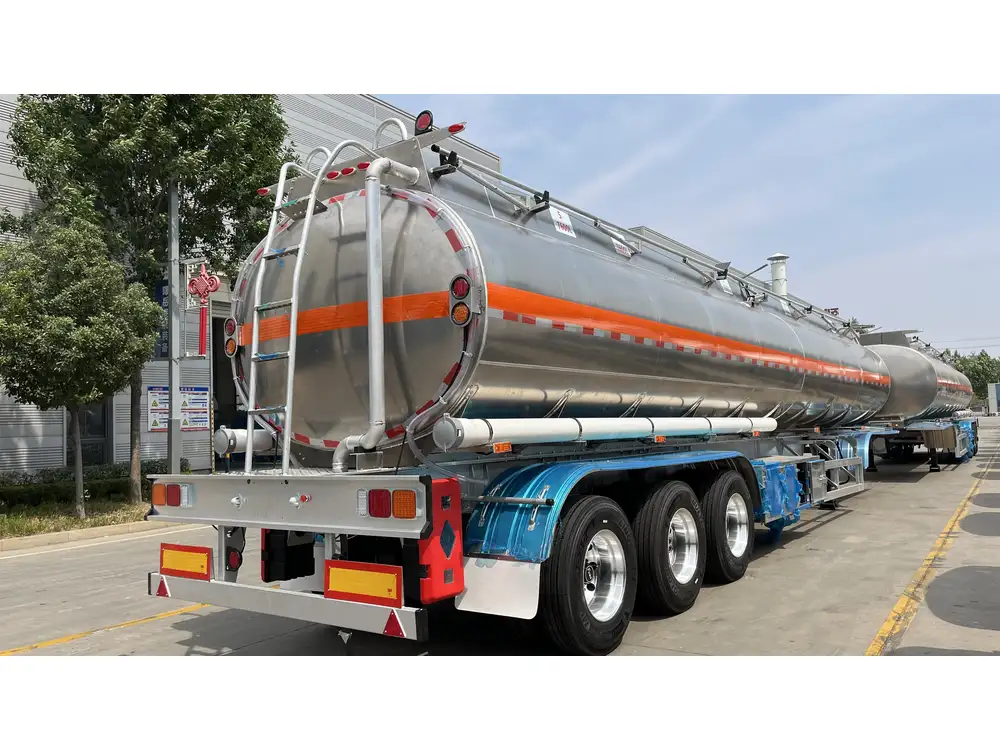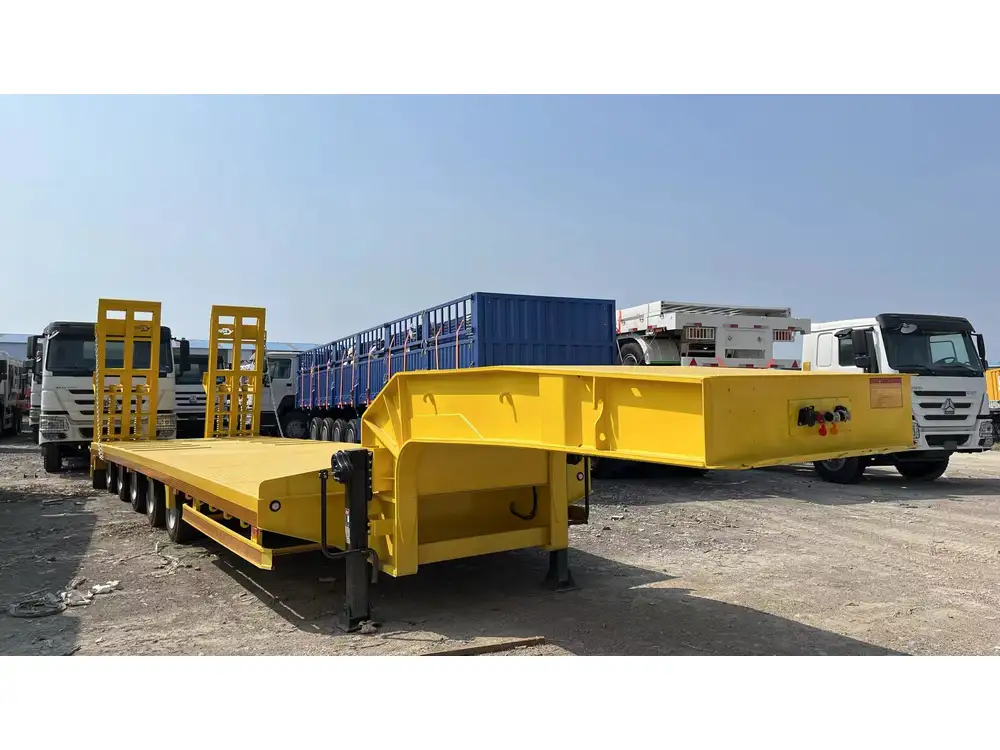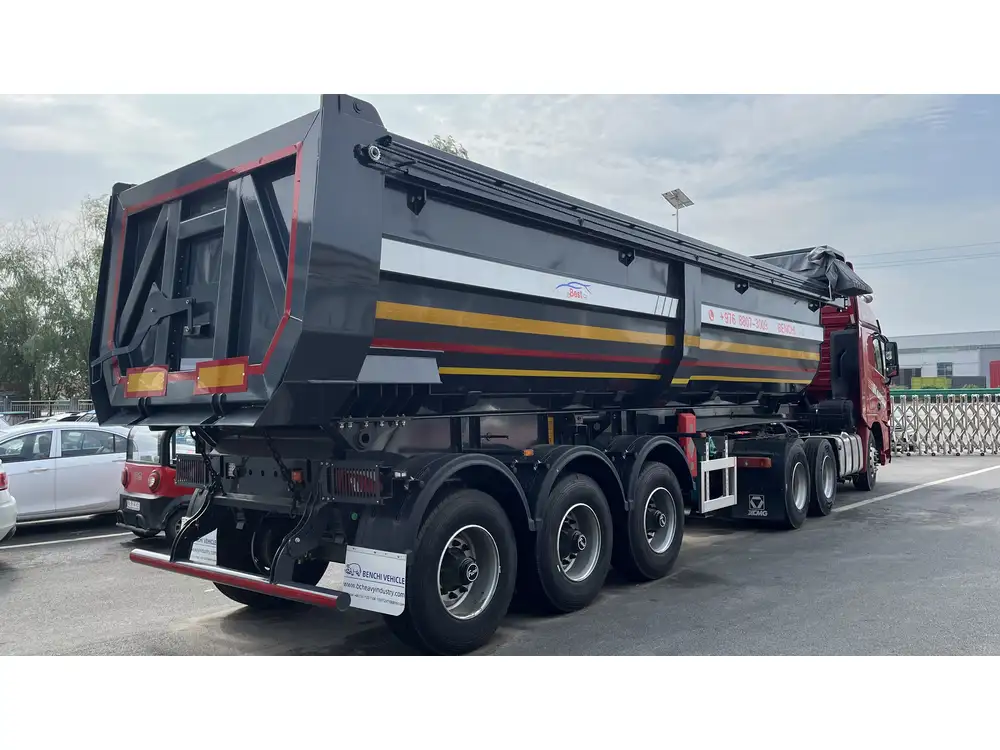When it comes to the intricate machinery that powers today’s semi-trailers, the braking system stands out as one of the most critical components. Understanding how semi-trailer brakes work is not merely a matter of technical knowledge; it is essential for safety, efficiency, and compliance in the transportation industry. In this detailed exploration, we will dissect the functionality, types, and technologies behind semi-trailer brakes, making sure you are equipped with all the necessary insights to enhance your operational expertise and safety standards.
Key Components of Semi-Trailer Brakes
To appreciate the complexity of how semi-trailer brakes operate, it’s vital to understand the main components involved.
| Component | Description |
|---|---|
| Brake Drum | A cylindrical component that houses the brake shoes and pads. |
| Brake Shoes | Metal plates that press against the brake drum to create friction. |
| Air Compressor | Generates compressed air to activate the braking system. |
| Control Valve | Regulates air pressure within the braking system. |
| Slack Adjuster | Automatically adjusts the distance between brake shoes and drum. |
| Wiring Harness | Connects the electrical system to the brake components. |
The Role of Compressed Air
Most semi-trailer brake systems operate using air brakes, known for their reliability under substantial loads. When the truck driver applies pressure to the brake pedal, it opens the valve allowing compressed air stored in the air tanks to flow to the brake chambers. This process initiates a mechanical action that engages the brake shoes against the drum.
Air Supply: The system relies on a consistent supply of air, stored in tanks. The air compressor keeps the pressure within optimal limits.
Air Distribution: The control valve manages how much air is sent to each braking component, balancing the workload to ensure safe deceleration.
Engagement Mechanics: The thrust from the compressed air moves a diaphragm inside the brake chamber, pushing the brake shoes outward against the drum.

Types of Semi-Trailer Brake Systems
Understanding the types of braking systems is crucial for operators and manufacturers alike. The primary variations include:
1. Drum Brake Systems
Drum brakes have a longstanding place in the semi-trailer industry:
- Design: Utilize a robust drum encased within a steel framework.
- Operation: When the brakes are applied, shoes press against the drum. This creates friction to slow down or stop the vehicle.
Benefits:
- Heat Dissipation: Drum brakes excel at dissipating heat energy produced during braking, making them less prone to fade.
- Cost-Effectiveness: They tend to be less expensive to manufacture.
Drawbacks:
- Weight: Can add significant weight to the trailer.
- Maintenance: Require more frequent adjustment and maintenance due to wear.
2. Disc Brake Systems
The advent of disc brakes has shifted paradigms in heavy-duty truck braking:
- Design: Feature a flat disc which the brake pads directly squeeze.
- Operation: Similar to a bicycle’s brake system, pressing the brake pedal pushes the pads against the rotating disc, creating friction.
Benefits:
- Efficiency: Offer superior stopping power, particularly beneficial in hilly terrains.
- Maintenance: Easier to inspect and replace, promoting reduced downtime.
Drawbacks:
- Initial Cost: Generally more expensive to install than drum brakes.
- Performance in Wet Conditions: Can sometimes lose effectiveness in wet conditions before the natural ‘wear-in’ occurs.

Braking Performance Factors
The effectiveness of semi-trailer braking systems not only relies on the type of brakes but also on several other factors:
1. Load Distribution
The appropriate load distribution across the trailer affects braking performance significantly. An uneven load can cause:
- Uneven Wear: Favors one side, leading to premature failure.
- Instability: Can lead to loss of control during braking.
2. Tire Condition and Type
Tires play a critical role in how effectively brakes engage with the road. Considerations include:
- Tread Depth: Worn or insufficient tread can lead to reduced traction, especially in wet conditions.
- Tire Pressure: Proper inflation is essential for optimal braking.

3. Road Conditions
Braking distance varies immensely depending on the road’s surface type (asphalt, gravel, icy, or wet). Key points include:
- Weather Influence: Rain, snow, and ice increase stopping distances significantly.
- Surface Friction: Higher friction surfaces will allow for shorter stopping distances compared to lower friction ones.
4. Driver Experience
An experienced driver can mitigate braking issues by:
- Predictive Driving: Anticipating stops and adjusting speed proactively.
- Safe Following Distance: Maintaining adequate distance from other vehicles enhances safety during emergency stops.
Troubleshooting Common Brake Issues
Despite their robust design, semi-trailer brake systems can encounter issues. Here’s a breakdown of common problems and potential remedies:
| Problem | Symptoms | Potential Solutions |
|---|---|---|
| Brake Fade | Loss of braking power | Inspect for overheating; adjust air supply. |
| Uneven Wear | Pulling to one side | Check for proper alignment and adjust load distribution. |
| Leaking Air Lines | Hissing sound, loss of pressure | Inspect and replace faulty air hoses. |
| Worn Brake Shoes | Reduced stopping power | Regular inspection; replace shoes when necessary. |
| Faulty Slack Adjuster | Inconsistent engagement | Check and replace the slack adjuster as required. |

Best Practices for Maintaining Semi-Trailer Brakes
Maintenance is paramount in preserving the longevity and functionality of semi-trailer brakes. Here’s a structured approach:
Routine Inspections
- Frequency: Conduct thorough inspections at least once a month.
- Key Areas: Check brake drums, shoes, lines, and air supply components.
Proper Cleaning
- Drum Cleaning: Remove dust and debris from drums and shoes to prevent friction loss.
- Lubrication: Apply suitable grease to components that require it, such as slack adjusters.

Adjustment of Brake Systems
- Regular Adjustments: Make necessary adjustments to ensure optimal performance.
- Automated Slack Adjusters: These mechanisms need checks to confirm they are functioning correctly.
Training Drivers
- Awareness Programs: Offer training sessions to inform drivers about optimal braking techniques.
- Awareness of Load Impact: Educate drivers on the effects of load distribution on braking efficiency.
Advancements in Semi-Trailer Braking Technologies
As technology continues to evolve, so do semi-trailer braking systems. Innovations include:

Advanced Brake Assist Systems
These systems utilize sensors and automation to enhance braking performance:
- Automatic Emergency Braking (AEB): Detects obstacles and applies brakes without driver intervention.
- Electronic Stability Control (ESC): Helps maintain vehicle stability under heavy braking conditions.
Regenerative Braking
This technology captures energy lost during braking, converting it into electricity to recharge batteries used by hybrid systems. It’s a promising avenue for increasing the efficiency of semi-trailers.
Conclusion
Grasping the complexities of how semi-trailer brakes work not only enhances operational safety but also boosts overall efficiency in transportation logistics. By understanding components, recognizing potential issues, implementing rigorous maintenance schedules, and keeping abreast of technological advancements, operators can significantly improve the traction and reliability of their braking systems. Mastery over these systems is not merely a technical objective—it is a foundational principle in safeguarding lives and assets in the transport sector. Each factor discussed is an essential thread in the intricate web of semi-trailer operation, and attention to detail can reap immense rewards in safety and performance.
Equipped with this knowledge, manufacturers, operators, and drivers can work in harmony to ensure not only regulatory compliance but also enhanced safety and performance in every journey undertaken with a semi-trailer.



